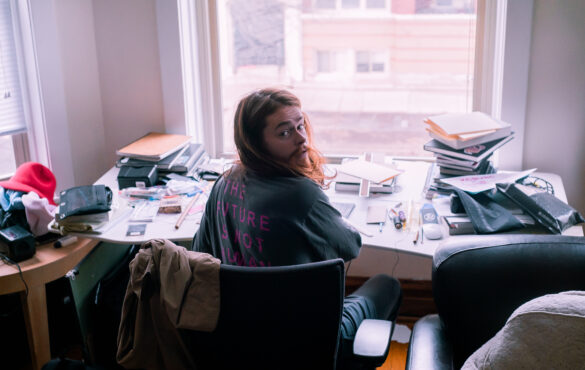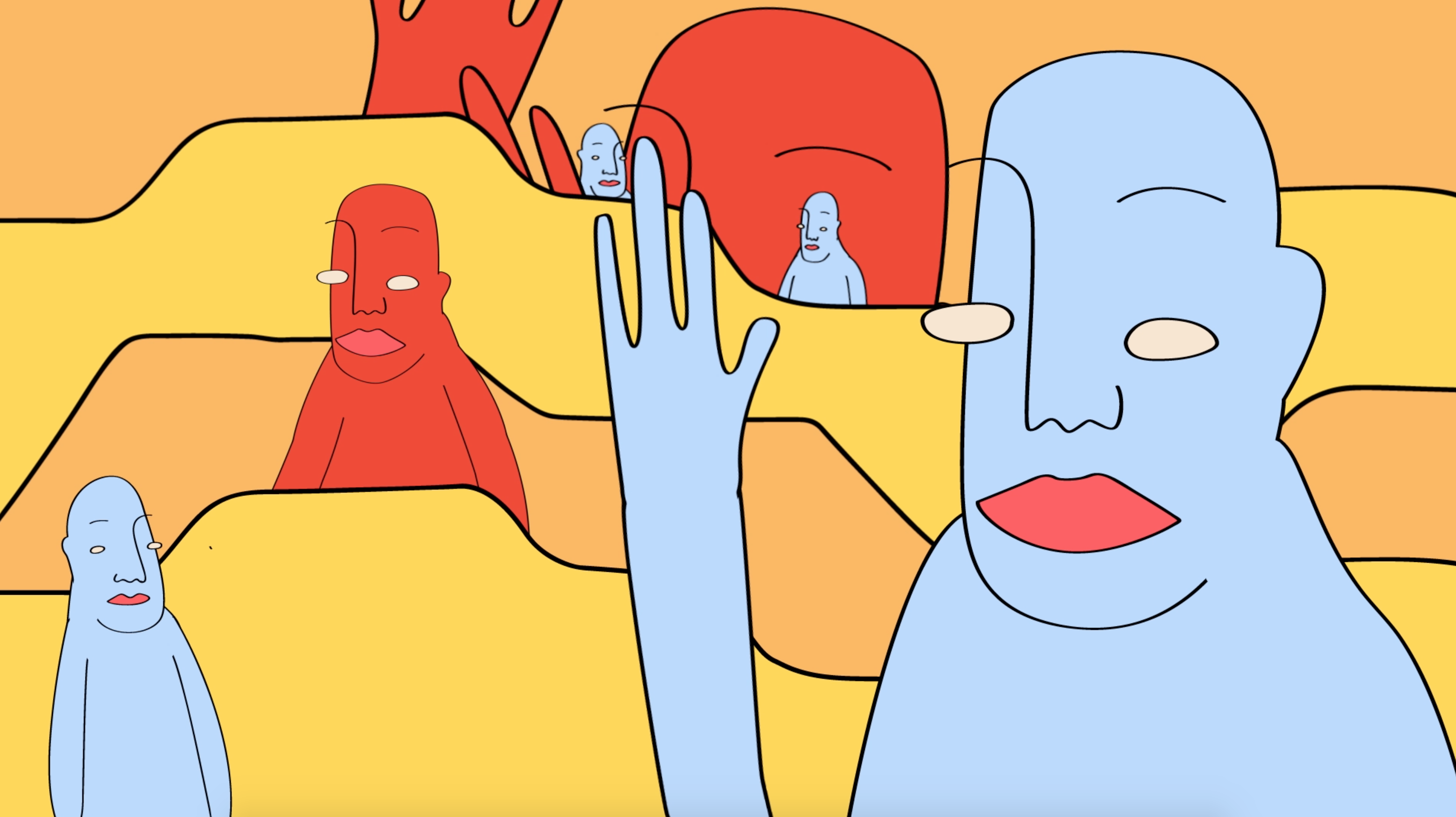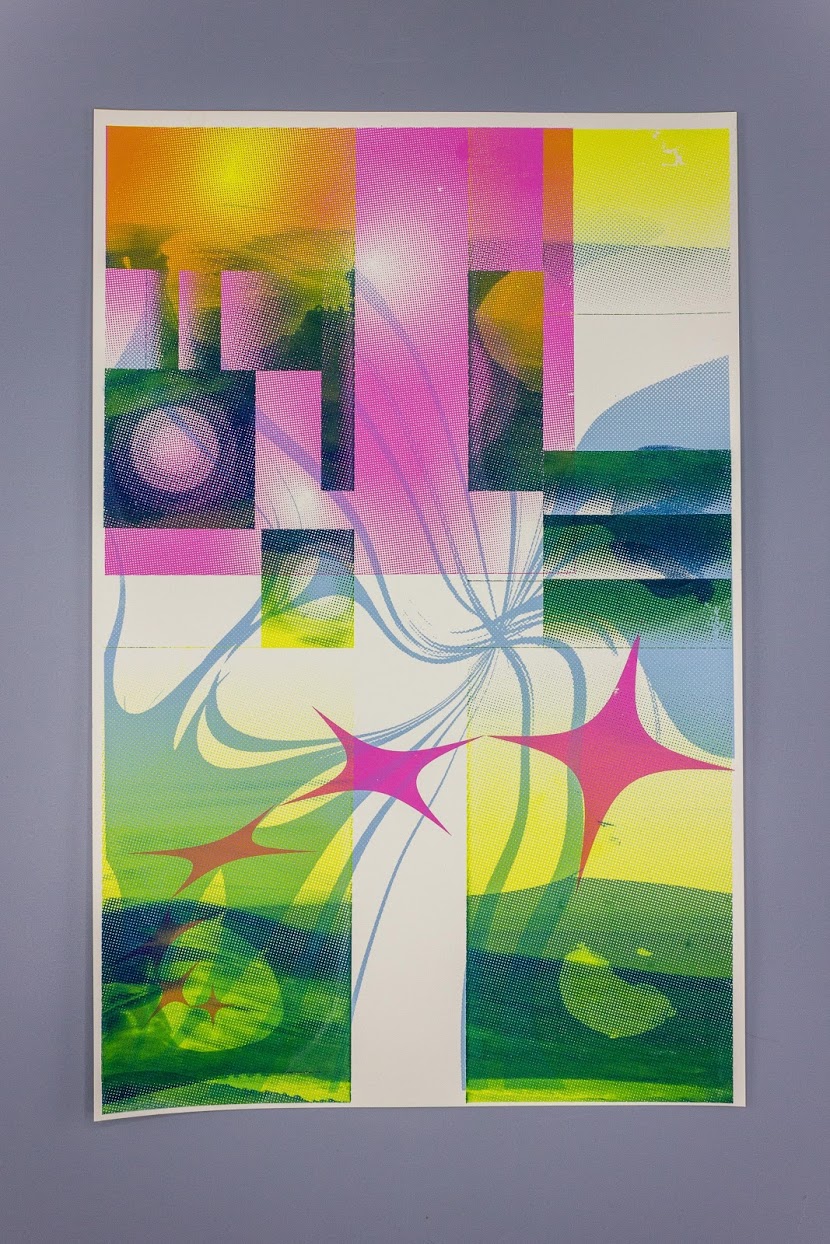Dan Landgren is a multidisciplinary designer, artist, and printmaker based in Chicago. He received his BFA in Graphic Design from DePaul University in 2018. His work explores visual communication typically involving themes like technology, science fiction, and motion. He currently works as a motion + graphic designer and has worked for artists such as: Danny Cole, Portugal The Man, and Cherry Glazerr. He is also a recent Spudnik fellow.
Dan was interviewed by Emma Sielaff as a part of her Summer 2020 Internship at Spudnik Press Cooperative. Emma is an multidisciplinary artist, specializing in illustration, papermaking, design, and zine making. She recently graduated with a BFA in New Media at the University of Illinois at Urbana-Champaign.
Emma Sielaff (ES): What / who is the biggest influence on your work?
Dan Landgren (DL): I really like science fiction and the classic 60s, 70s and 80s sci-fi art, like the really out there book covers by Phil K. Dick. Those are super inspiring and the stories themselves are really interesting. I love dystopian futuristic stuff. Books in general give me a ton of inspiration and inform the work that I do in any given time as well as design theory and design history like Bauhaus and constructivism. I think that’s where I found my first real interest with visuals and design. What I’m into in any given moment is what I make prints about.
ES: What does your process look like?
DL: My process usually starts by me writing down a list of words I’m interested in or want to be reminded of. I’ll write down descriptive words of the emotion I want to convey within the work I’m creating. I’ve been reading a lot of Octavia Butler. Just reading one of her stories, I immediately feel super creative. I’ll write down words I don’t know or emotions that I’m feeling; stuff like that. This really helps me get ideas.
I love grids in general. I think layout is always a good place to start in terms of figuring out a print. I’m super drawn to the imagery of grids themselves, I think there’s something nice to them because it takes the pressure off of deciding where you’re going to put something. It gives more purpose to your visuals when you actively think about where it’s being placed and its relationship to other things on this grid.
So usually my process starts by thinking about what I want to do and things I want to convey and then just kind of figuring out the visuals.
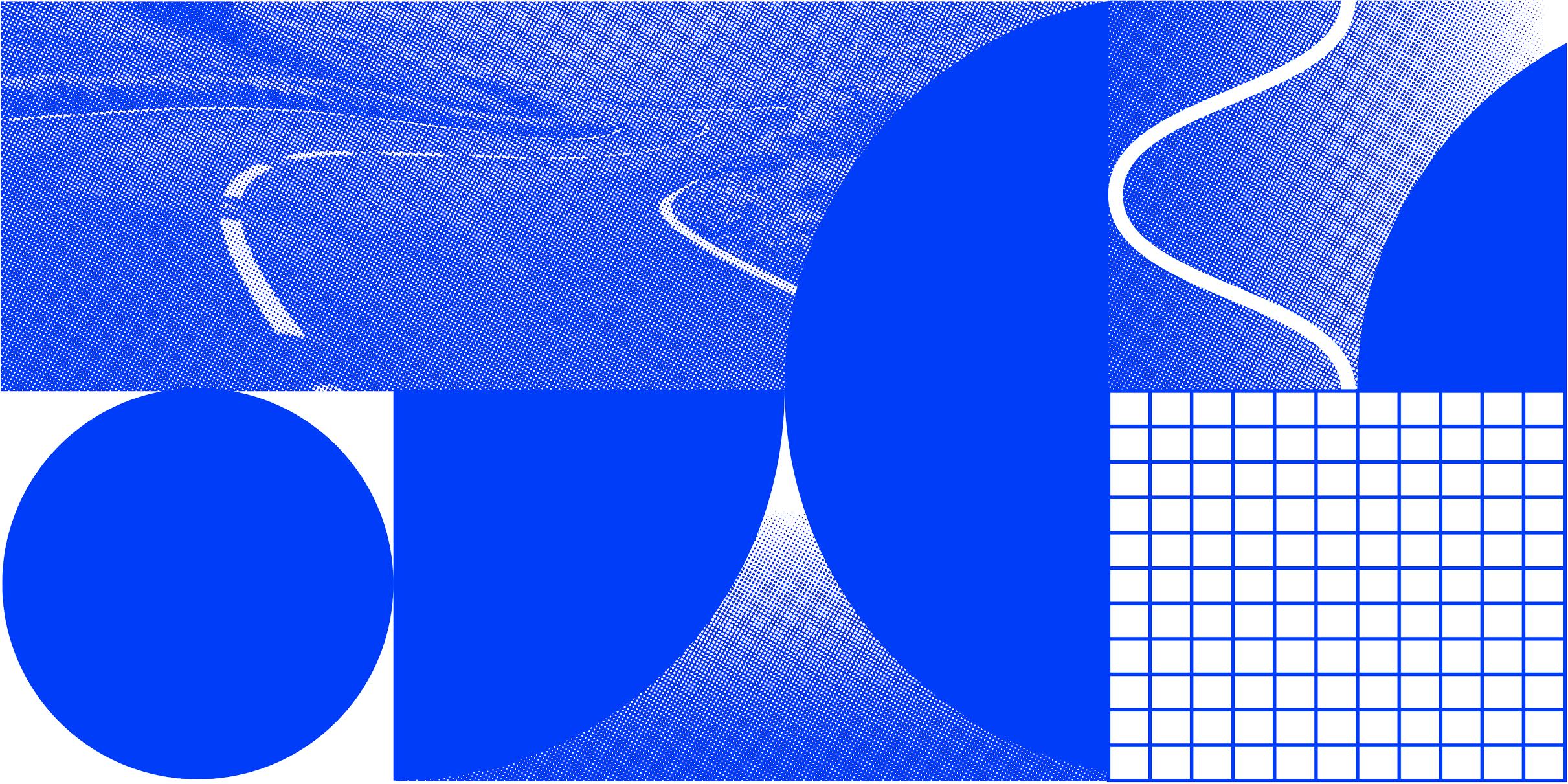
Root Rectangle Bookmark, Screenprint, 2019
ES: I love the animation you did for the Kaytranada track. When you hear something, what is your process like for making it come alive visually? What does that process look like for you to take your vision and create it?
DL: That project was actually a class project to animate a piece of music for my cinema 4D class, which made it a little more structured in how I thought about the work. . I love Kaytranada and I thought that beat (Despite the Weather by Kaytranda) was super interesting because it’s multi-layered. There are different instruments playing at the same time and they’re not necessarily totally in sync. I started thinking about different ways I could visualize each of the instruments I was hearing. I tried to think of a good way to visually express the timing of, say, a drum hit. I tried thinking about how visuals could move well with the sync of the music.
ES: In your bio, you say that experimentation is a big influence on your work. What does experimentation look like or mean to you?
DL: My experimentation comes from my freshman year at the University of Arizona for architecture. The whole theme of the foundation year was iteration and change. We learned to build on ideas that we had and make them stronger by playing around with them. My foundation architecture teacher really pushed that type of thinking and it had a really big impact on how I create things. For any given project, we would have to give 10 or 20 different variations and have reasoning behind them. It made me appreciate the possibilities of experimentation. Changing even small things has a cascading effect on the work.
Iteration also creates a feeling of never being finished with work. A big thing for me is that I always come back to projects and try to make them better because I think there is no reason for you to put something on the shelf and say it’s done. There are always improvements to be made and that’s kinda ingrained with experimentation. It’s all a matter of wanting to see where a piece goes–not necessarily doing it to make a final product, but doing it to see what happens. There is nothing wrong with circling back.
ES: What do you do for fun and how does it influence your creative process?
DL: I’ve been going on a lot of bike rides lately. I really like playing soccer with my friends. We’ve been doing that weekly which is a really nice release.
Printmaking started as and is still a huge creative release for me. I started screen printing about a year ago. I was feeling really burnt out from my job, I hated what I was doing, and hated animation. It’s somewhat of a shitty realization. I was like “damn… I thought I liked this a bit more.” I just was not feeling like myself and I needed a change. A former fellow, Lisa Armstrong, had the fellowship when I was feeling like this. She does the coolest work. She’s been a huge inspiration for me. Seeing her succeed and make a ton of work during her fellowship made me appreciate printed media. Before I started screen printing a lot, I was only making digital work, animation, and all computer based stuff. After a while you just burn out.
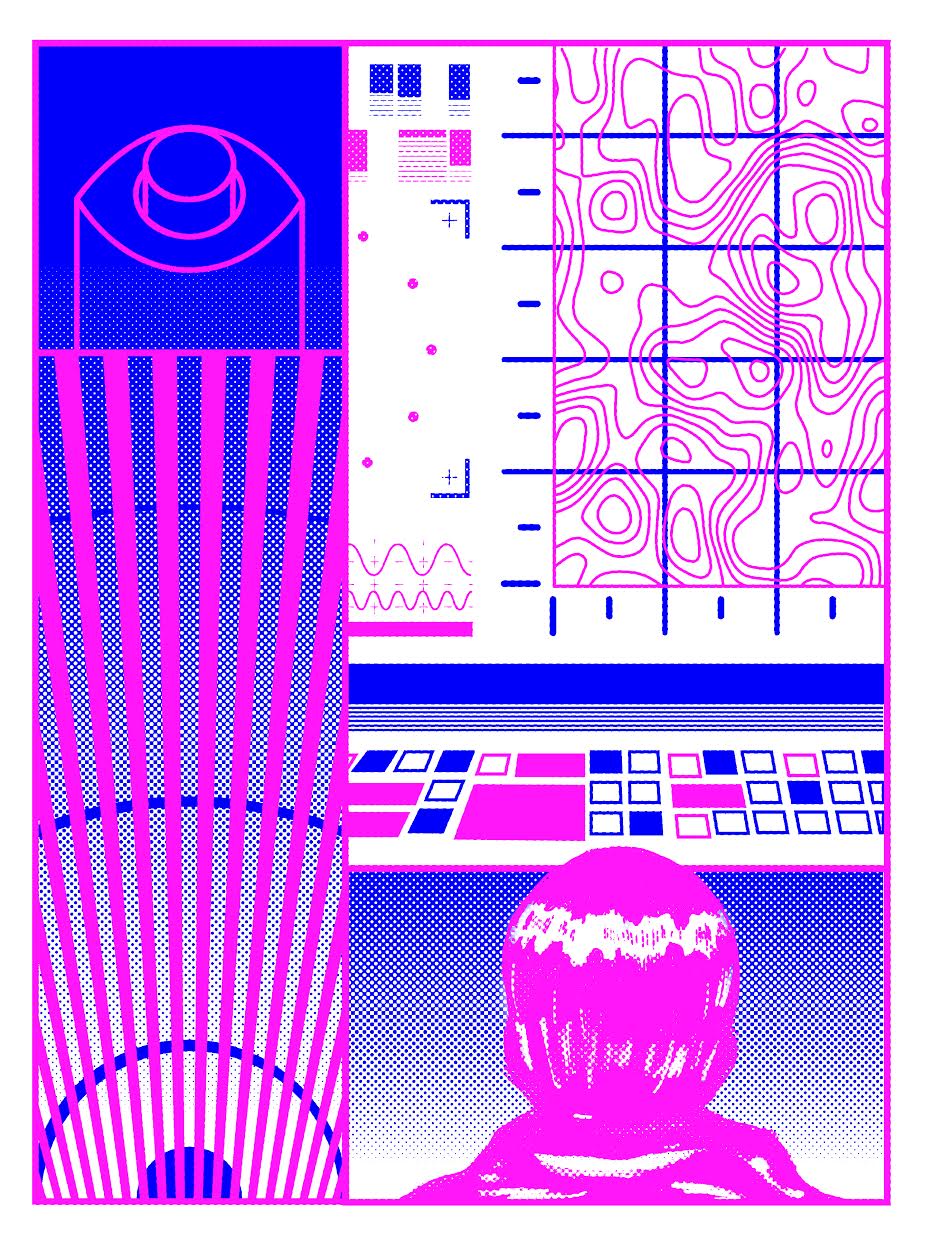
Neon Genesis, Screenprint, 2019
ES: For a lot of artists, including myself, my work is a reflection of myself and my experiences. How does your “being” flow into what you make?
DL: I’m not necessarily reserved but I’m also not a very strongly opinionated person. So I feel like I try to blend in more than anything. My work pays homage to the people and things that I really love. I guess me inserting myself into my art is me first copying something I really like and then I can create it in my own style. I feel like my style in general is honestly really inconsistent. I do a lot of different random things because I get bored easily.
ES: A lot of your work seems to be either print or video based. When creating, what pushes you to use one format over the other?
DL: That’s tough. I would say usually all of my ideas start as still frame images. From there, if I can see a path of movement, I might be more inclined to make it an animation. I think more than anything, it’s figuring out the image itself: the still frame. Honestly, it’s something I struggle with in my day job. It’s really fast-paced and I need to churn out daily. While working, I had a really big revelation about my creative process. When given an assignment, as much as I want to have a fully fleshed finished product, I realized I can’t start there. I have to break down my ideas to the most simple thing and just go from there to see what I get.
ES: I’m super impressed with your work on the “Daddi” Video + Coachella animations you made in collaboration with Danny Cole. How do you go about taking ideas from 2D to 3D thinking and what were those projects like for you?
DL: Danny Cole actually found my artwork through reddit, specifically the Kaytranada video. He messaged me saying “This is so cool. I need to do some visuals for Coachella. Would you be interested?” At first I was skeptical, but we had an initial call and I was like “Oh woah! He’s actually serious.” From there, he wanted to make sure that I could do what he was asking. The scope of the project was 30 – 40 animated loops. I got the job after making a test animation. From there, I knew I couldn’t do 40 animations by myself so I recruited some friends to make it possible.
In terms of idea creation, it was a mixture of a lot of things. Danny knew exactly what he wanted for some loops, but for others he would ask me for feedback. It was a back and forth process working to figure it out.
For the Cherry Glazer video, it was a bit more work. Me and the guys that I worked with for the Coachella animations did some rough 3D storyboards and then did a similar back and forth with Danny to see where his head was at and if our vision was matching his vision. From there we picked and chose what worked and built it up.
It was really just a super lucky opportunity; kind of the right place at the right time. I just happened to post the week that he was looking for animators.
ES: What is the biggest challenge you face when making work?
DL: Usually, the biggest creative challenges I have are time-related. If I’m super stressed out and feel like I don’t have enough time to do something, I’ll kind of shut down and freak out. It’s a matter of managing that stress and feelings of inadequacy. Every creative has imposter syndrome, feeling that they don’t belong, and I feel that all the time.
Screen Printing is really more than anything for personal enjoyment. It’s largely a creative outlet for me to actually have agency to do whatever I want. Whereas my full time job is the complete opposite. I have no freedom and basically am just told what to do.
ES: What is your current job?
DL: I work at a small business design consultancy that uses design thinking methodology applied to business structure. It’s basically therapy for big business. I’m essentially a UX designer but less digitally focused and more person-to-person based. We work with a lot of big health care companies and consumer packaged good (CPG) companies. We do sprint workshops, identify problem areas and identify ways to move forward with companies and I help with visual components, like animations or videography. It’s a really small company so I’m constantly wearing different hats; doing different things. Before COVID, any given day could be random. I could film an event or run sessions. It’s cool but it’s also draining.
ES: How has your style changed over time? Especially since graduating school, how has your practice changed?
DL: I think I’ve grown a lot more into my own personal style. I feel better about the direction that my work takes. Since graduating, I’ve definitely gained more confidence in my work. A big issue I had in school was that I really couldn’t understand what an office type job would be like. I was always over romanticising the freedoms. I had a really big reality check when I got my first job. I feel like what’s changed the most is that I’ve kind of just grown up.
ES: Does your job have any impact on your personal work?
DL: It does have a lot of impact. A big part of my process is learning and constantly growing and if I’m not doing that then I feel really stagnant. Having a full time job in the animation field is really helpful at times but at times it’s really stressful and makes me question if I really like doing what I’m doing or if I’m just telling myself I like it. I think there’s a lot of goods and bads but the experience has been overall positive.
Before this full time job, I really was “head in the clouds” all throughout school and I had really not grasped reality.
ES: When you were a kid, what was your “dream” job? How does what you’re doing now compare to that?
DL: I remember being in 6th grade and for class we had to pretend we were adults, find an apartment, and make a budget. It was a really cool idea. I forgot everything about the assignment but I do remember wanting to be a newspaper comic artist at the time. It’s some connection to what I’m doing now with animation.
ES: What do you want to explore more in your own practice? What do you want to keep pushing towards?
DL: My big dream is to print big. I’ve never printed anything bigger than 11 x 17 so I would love to print something cataclysmically huge. I’m trying to go through and review a wide variety of sci-fi books. A big goal is to be more well read, not just sci-fi. Reading is valuable and makes you a more interesting person. I’ve been reading this book called a Primer of Visual Literacy, and it’s super interesting. It’s about visual communication as a language and how we should be treating visual communication the same way that we treat language and writing. It has the same capabilities and the same complexities.
ES: Do you have any current projects in the works?
DL: Lately, I’ve been super interested in optical illusions and visual math. I took an online animation class three months ago about geometry and math and how they are related to animation. Ever since then I’ve been super interested in math’s relation to visual layout. Last week I got super interested in obstacle illusions and gestalt theory mainly because this book I’m reading. I don’t want to say this and read this article in a month and not have done this but I want to do some optical illusion prints. I have a few in the works, so stay tuned.
